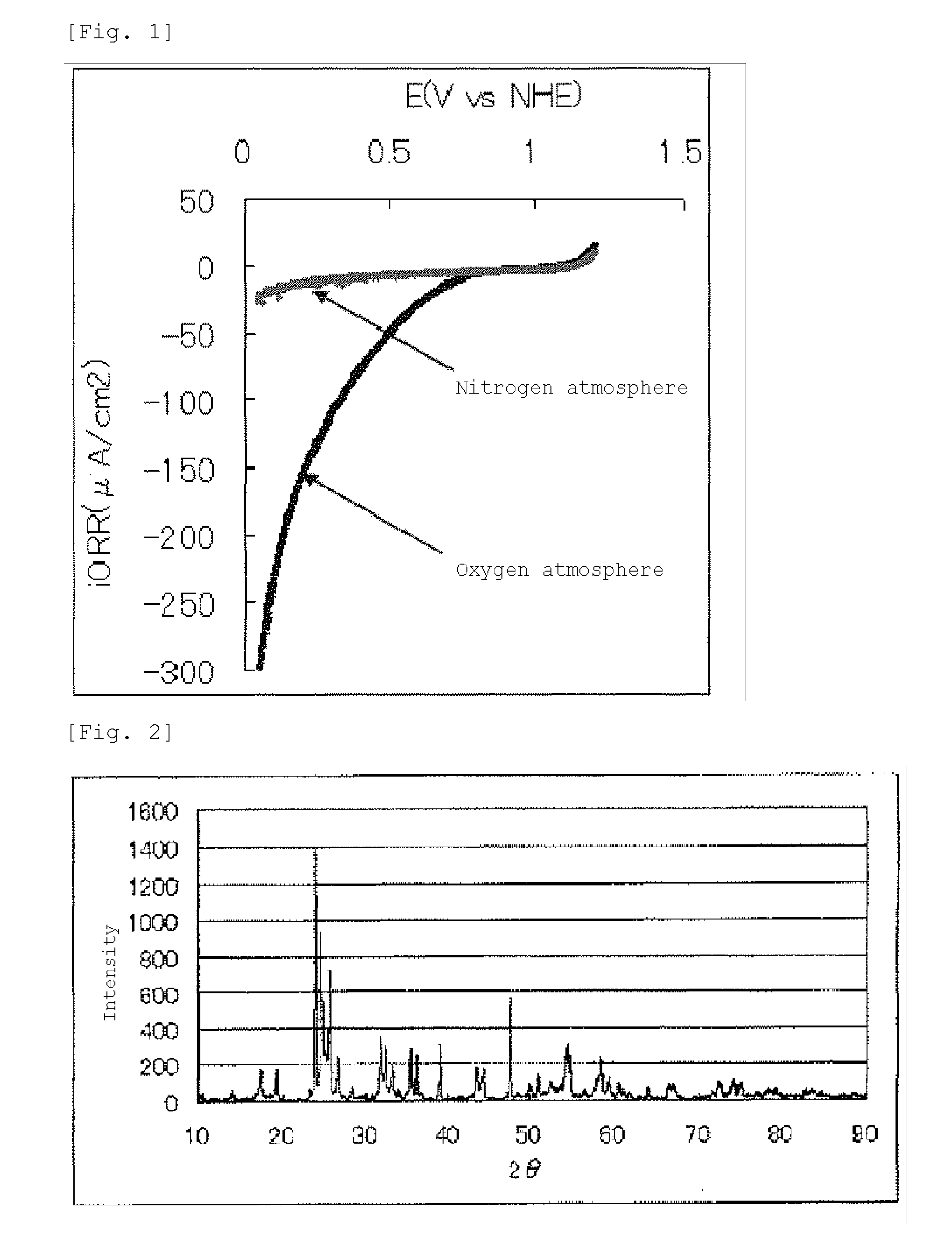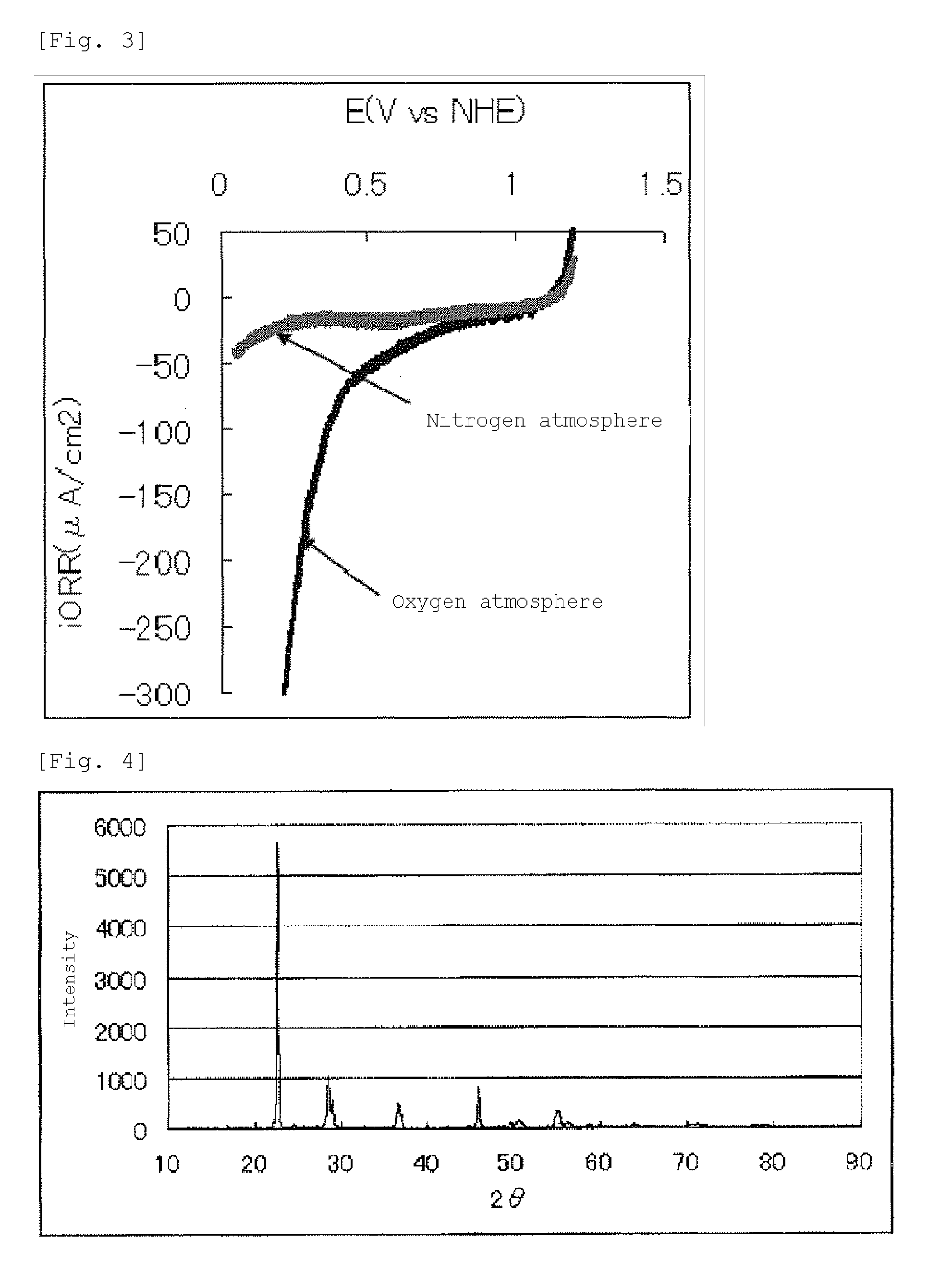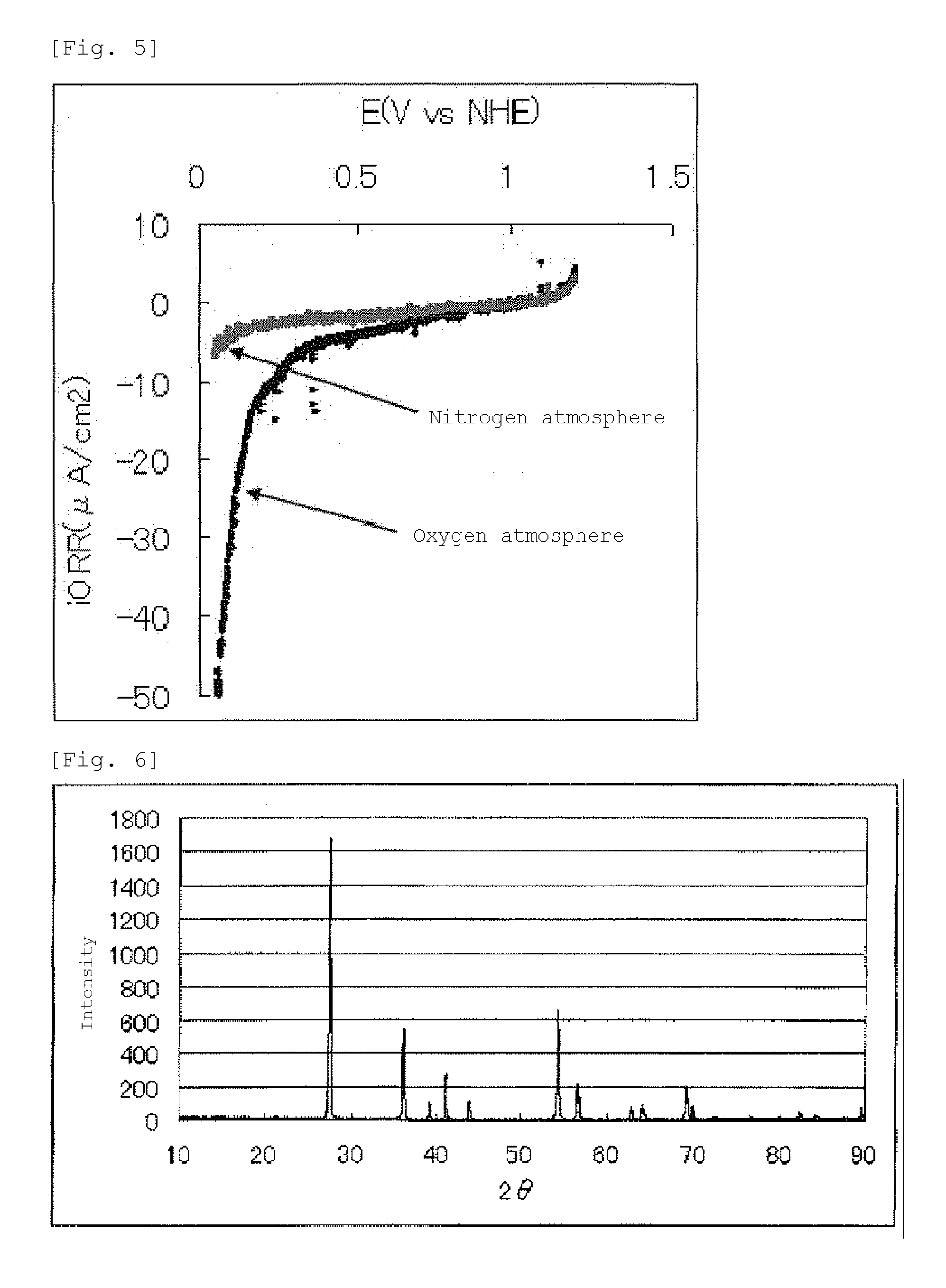Metal oxide electrocatalyst, use thereof, and process for producing metal oxide electrocatalysts
- Summary
- Abstract
- Description
- Claims
- Application Information
AI Technical Summary
Benefits of technology
Problems solved by technology
Method used
Image
Examples
example 1
(Production of Metal Oxide Electrocatalyst)
[0132]Niobium dioxide (NbO2) powder (purity: 99.9%, manufactured by Kojundo Chemical Lab. Co., Ltd.) in an amount of 5.0 g was placed in an alumina crucible and was heat treated in an electric furnace (desktop muffle furnace KDF P90 manufactured by DENKEN CO., LTD.) under a stream of N2 at 50 NL / min under the following conditions.
[0133]Temperature increasing rate: 20° C. / min
[0134]Calcination temperature: 1000° C.
[0135]Calcination time: 2 hours
[0136]After the heat treatment, the calcined product was naturally cooled. As a result, 5.3 g of niobium oxide was obtained. The niobium oxide was sufficiently crushed in a mortar to give a metal oxide electrocatalyst (1).
(Production of Fuel Cell Electrode)
[0137]The oxygen reduction activity was determined in the following manner. The metal oxide electrocatalyst (1) in an amount of 0.095 g and carbon (XC-72 manufactured by Cabot Corporation) weighing 0.005 g were added to 10 g of a solution consisting ...
example 2
(Production of Metal Oxide Electrocatalyst)
[0156]The procedures of Example 1 were repeated except that the calcination temperature was changed from 1000° C. to 800° C. and the calcination time was changed from 2 hours to 1 minute, thereby obtaining 5.3 g of niobium oxide. The niobium oxide was sufficiently crushed in a mortar to give a metal oxide electrocatalyst (2).
(Production of Fuel Cell Electrode)
[0157]A fuel cell electrode (2) was produced in the same manner as in Example 1 except that the metal oxide electrocatalyst (1) was replaced by the metal oxide electrocatalyst (2).
(Evaluation of Oxygen Reduction Activity)
[0158]The oxygen reduction activity was evaluated in the same manner as in Example 1 except that the fuel cell electrode (1) was replaced by the fuel cell electrode (2).
[0159]The current-potential curve recorded during the measurement is shown in FIG. 3.
[0160]The fuel cell electrode (2) manufactured in Example 2 had an oxygen reduction onset potential of 0.9 V (vs. NHE...
example 3
(Production of Metal Oxide Electrocatalyst)
[0167]The procedures of Example 1 were repeated except that 5.0 g of the niobium dioxide (NbO2) powder (purity: 99.9%, manufactured by Kojundo Chemical Lab. Co., Ltd.) was replaced by 5.0 g of dititanium trioxide (Ti2O3) powder (manufactured by Wako Pure Chemical Industries Ltd.), thereby obtaining 5.6 g of titanium oxide. The titanium oxide was sufficiently crushed in a mortar to give a metal oxide electrocatalyst (3).
(Production of Fuel Cell Electrode)
[0168]A fuel cell electrode (3) was produced in the same manner as in Example 1 except that the metal oxide electrocatalyst (1) was replaced by the metal oxide electrocatalyst (3).
(Evaluation of Oxygen Reduction Activity)
[0169]The oxygen reduction activity was evaluated in the same manner as in Example 1 except that the fuel cell electrode (1) was replaced by the fuel cell electrode (3).
[0170]The current-potential curve recorded during the measurement is shown in FIG. 5.
[0171]The fuel cell e...
PUM
| Property | Measurement | Unit |
|---|---|---|
| Temperature | aaaaa | aaaaa |
| Energy | aaaaa | aaaaa |
| Specific surface area | aaaaa | aaaaa |
Abstract
Description
Claims
Application Information
 Login to View More
Login to View More - R&D
- Intellectual Property
- Life Sciences
- Materials
- Tech Scout
- Unparalleled Data Quality
- Higher Quality Content
- 60% Fewer Hallucinations
Browse by: Latest US Patents, China's latest patents, Technical Efficacy Thesaurus, Application Domain, Technology Topic, Popular Technical Reports.
© 2025 PatSnap. All rights reserved.Legal|Privacy policy|Modern Slavery Act Transparency Statement|Sitemap|About US| Contact US: help@patsnap.com



